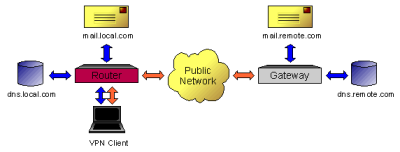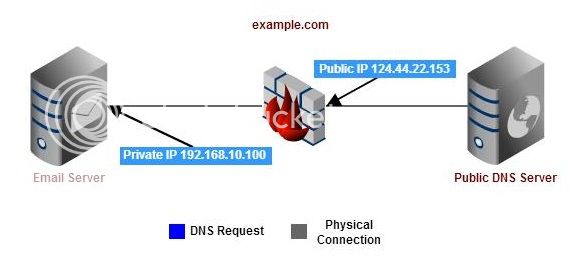


Split DNS View with Statically Configured Hostname Cache Entries Example.Split DNS View with Dynamic Name Server Configuration Example.Split DNS View Limited to Queries from a Specific VRF Example.Specifying a Source Interface to Forward DNS Queries.Specifying a DNS View List for a Router Interface.Specifying the Default DNS View List for the DNS Server of the Router.Changing the Order of the Members of a DNS View List Already in Use.Adding a Member to a DNS View List Already in Use.Defining Static Entries in the Hostname Cache for a DNS View.Response to Internally Generated DNS Queries per the Resolving Parameters of the Default Global DNS View.Response to Incoming DNS Queries per the Forwarding Parameters of the Selected DNS View.Router Response to DNS Queries in a Split DNS Environment.Parameters for Forwarding Incoming DNS Queries.Parameters for Resolving Internally Generated DNS Queries.View Use Is Restricted to Queries from the Associated VRF.Response to the Client-issued DNS Query.Ability to Offload Internet Traffic from the Corporate DNS Server.Selection of Virtual DNS Caching Name Server Configurations.Split DNS Use to Respond to DNS Queries Benefits.This simple change and setup can enable multiple subdomains to exist in your Active Directory environment.
#Splitt dns windows#
Note: For conditional forwarders to work, all the DNS servers in your Active Directory environment must run Windows Server 2003. Once you click OK on the DNS properties dialog box, the conditional forwarder for the domain you specified will be ready to go however, you may want to restart the DNS service just to make sure everything is working.

Enter the domain name for which the conditional forwarders should be configured - for example, - and click OK.Click the New button to the right of the DNS domain list.Select the Forwarders tab of the DNS properties dialog box for the selected server.Right-click the DNS server you wish to work with and click Properties.On a Windows Server 2003 domain controller, open the DNS console.To configure conditional forwarding as an attribute of DNS, complete the following steps: How is conditional forwarding configured? To the user, this is a seamless process that directs them to the correct resource. This way, if I’m in the domain and I need to get to a resource in the domain, when the DNS request gets to my domain’s DNS server, it can be sent directly to the other domain’s DNS server. Conditional forwarding specifies that certain requests should not be forwarded to public servers, but instead forwarded directly to a specific server within your environment. Windows server 2003 can combat this issue by using conditional forwarding. Because the resource I’m looking for is in a different internal domain, then there’s no chance of the external DNS server finding it in a typical DNS scenario. The request goes to the DNS server for my domain, and the domain then passes it off to the public DNS servers for my company when this happens, the DNS resource I’m looking for needs to be on the Internet for the server to find it. If I’m a user in domain and I need to find a Web address or a computer at, there may be an issue when my DNS server tries to forward this request. Organizations that have multiple internal domain names such as and can run into a problem with split-brain DNS because each domain requires DNS to work properly with Active Directory. Let’s look at split-brain DNS in Windows 2003 using Active Directory integrated DNS. This concept came about because some requests need to be forwarded differently if they go to the internal DNS server versus the request that would go to the publicly available DNS server, and Windows Server 2003 can handle this DNS behavior. In some cases it may be necessary to forward requests sent to these DNS servers differently, based on the location of the requester this is what’s known as split-brain DNS usage. In addition, these organizations also use Active Directory integrated DNS to allow for easier management. Many organizations may make use of two or more DNS servers - one for internal users and one for the rest of the world via the Internet.
#Splitt dns how to#
Set up split-brain DNS with Active Directory integrated zonesĭerek Schauland explains how to configure conditional forwarding in Windows Server 2003 when a split-brain DNS set up is called for.


 0 kommentar(er)
0 kommentar(er)
